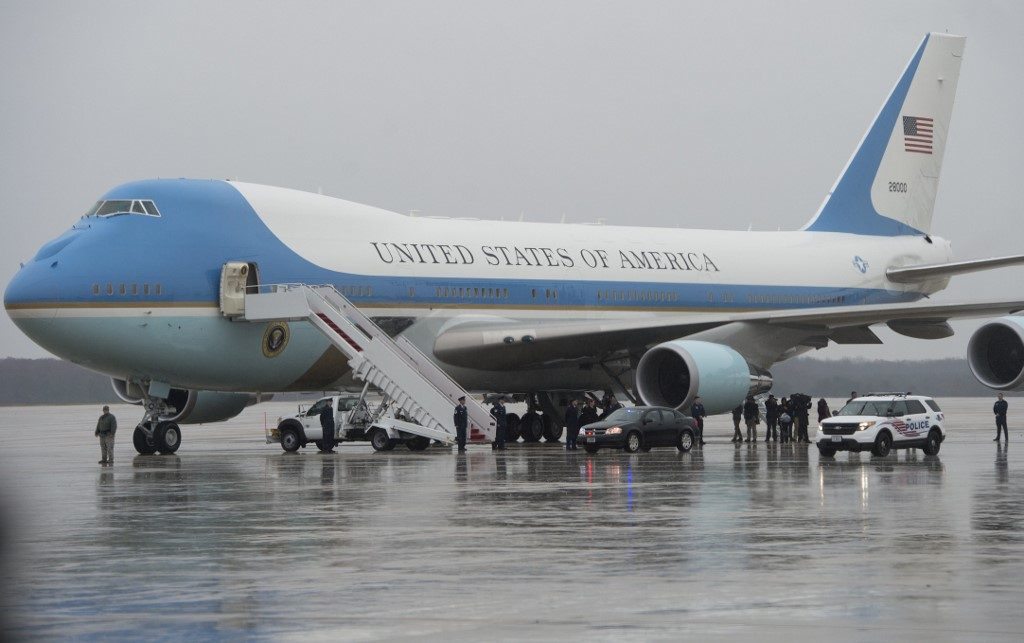SUMMARY
This is AI generated summarization, which may have errors. For context, always refer to the full article.

The Boeing 747 is an iconic jumbo jet that revolutionized air travel and tourism, allowing affordable flights for millions of people eager to see the world.
But the fuel-guzzling, four-engine plane’s days are numbered now, as Boeing said Wednesday, July 29, it will phase out production of it and stop in 2022. In the end, the 747 simply cannot compete with today’s more efficient, two-engine jetliners.
First flown commercially in 1969, in the same era as the supersonic Concorde, the 747 was an unprecedented success: a total of 1,571 were ordered and all but 15 were actually delivered.
More than anything, the plane democratized air travel by letting holidaymakers take cheaper flights, often in chartered 747s fitted with hundreds of economy-class seats – leg room be damned.
For 35 years, the 747 ruled the skies – until Boeing’s big European rival Airbus came out with the Super Jumbo A380.
The 747 owes its existence to Juan Trippe, the visionary founder of the now defunct Pan American World Airways. As far back as the early 1960s, Trippe was convinced that air travel, in particular trans-oceanic flight, was due for a huge boom.
As the story goes, during a fishing trip in Alaska, Trippe persuaded his friend Bill Allen, who then ran Boeing, to build a plane twice as big as the Boeing 707.
Trippe allegedly said that, if Allen had the guts to build such an aircraft, Pan Am would buy it.
A few years later the first 747 took to the skies, with Pan Am as the launch customer.
Recognizable for its cockpit hump atop the front end of the fuselage, some configurations of the 747 could hold up to 600 passengers.
It is double decker – the upstairs being for first-class travelers – and had 4 engines, which was its fatal flaw in terms of fuel cost and the environment.
“Given the current market dynamics and outlook, we will stop production of the iconic 747 in 2022,” general manager David Calhoun said on Wednesday in a message to employees.
“50 years and 8 versions. That is a beautiful record,” said Michel Merluzeau, an aviation expert at Air Insight Research.
“But its days were numbered, even before the COVID-19 crisis,” he said, adding that the 747 became a niche plane both for passenger and cargo markets.
More recently it faced competition from the Airbus A350.
And even within Boeing, the 747 had to vie with the longer range 777-300ER and the 777X, both of which were much more fuel-efficient than the aging jumbo.
‘From another era’
In recent years the 747 became a plane “from another era, with production methods that would not work, looking to the future,” said Merluzeau.
In the United States, no airline has used the Boeing 747 since late 2017.
Like its rival the A380 – production of which will halt in 2021 – it became a victim of global money woes stemming from the 2008 financial crisis, and then airlines started to prefer the Boeing 787 or Airbus A350.
These latter two-engine planes burn less fuel and can fly further thanks to a new generation of engines. This made obsolete the four-engine jumbo jet, which also requires twice as much maintenance work as a two-engine aircraft.
The decline of the 747 deepened with the coronavirus pandemic, which led to a stunning fall in air travel and prompted some airlines to announce they will retire the 747 from their fleets.
From now to 2022, Boeing will keep building 747s but just for cargo and military transport purposes.
The 747 can also count on support from the White House and the presidential plane called Air Force One.
The government is awaiting delivery of two 747-8s, which are bigger, more modern, faster, and less fuel-consuming than the current 747-200s that carry the president and his entourage. – Rappler.com
Add a comment
How does this make you feel?
There are no comments yet. Add your comment to start the conversation.